Living iceGlaciers flow under the influence of gravity by basal sliding, movement over a 'deformable bed' and by internal deformation. These processes give rise to a wide range of features on the glacier surface, including crevasses and other structures, many of which are illustrated in this section. |
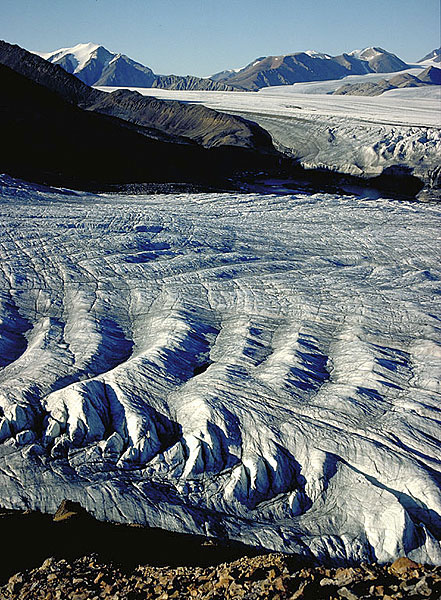 The low light of the midnight sun on Axel Heiberg Island, Canadian Arctic Archipelago emphasises surface features, such as crevasses, on White Glacier (in the foreground) and Thompson Glacier (backround). Both glaciers flow from left to right. JA | 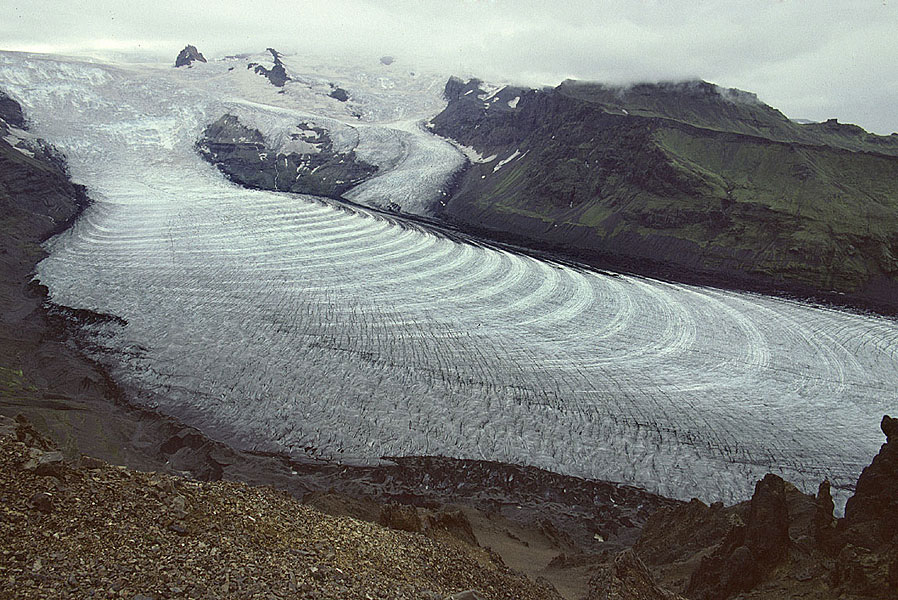 Svinafellsjökull is an outlet glacier from Oræfajökull icecap in southern Iceland. Pouring over a high rock step, the ice generates curved structures called ogives that indicate how the ice flows faster in the middle of the glacier than at the sides. Winter and summer flow appears to generate pairs of light and dark ice respectively. JA | 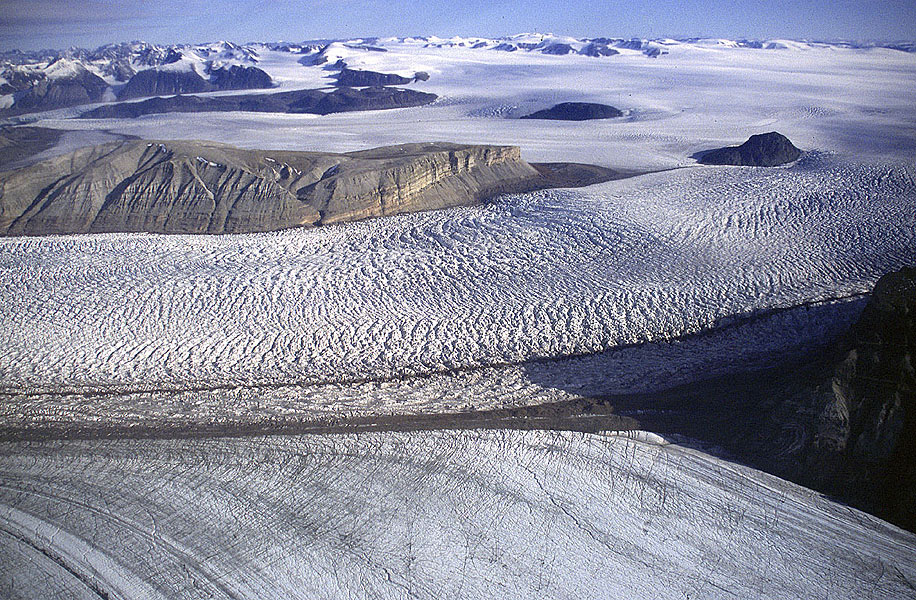 Fast-flowing tidewater glaciers are especially prone to heavy crevassing. Kronebreen, NW Spitsbergen, in this view flows at 700 m per year, and its surface is a maze of crevasses, making cross-glacier travel impossible. At the bottom of the picture, its tributary Kongsvegen is moving at less than 10 metres per year, as reflected in the absence of crevasses. MH | 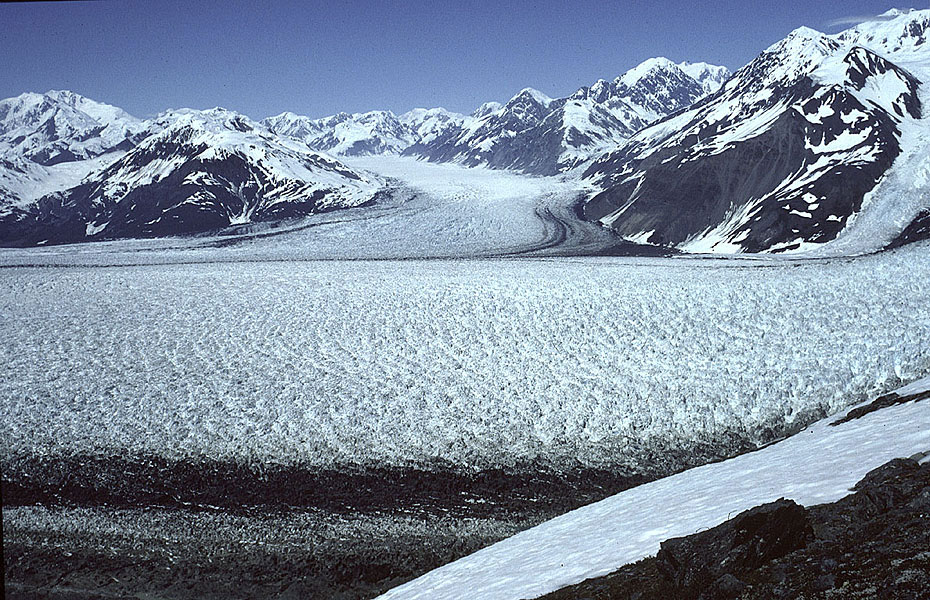 Fast-flowing glaciers such as the longest glacier in North America, the Hubbard Glacier in the foreground, and Valerie Glacier in the background typically have extensive crevassing which makes travel across their surface practically impossible. The Hubbard is flowing from right to left, discharges into the sea just off the picture. MH |
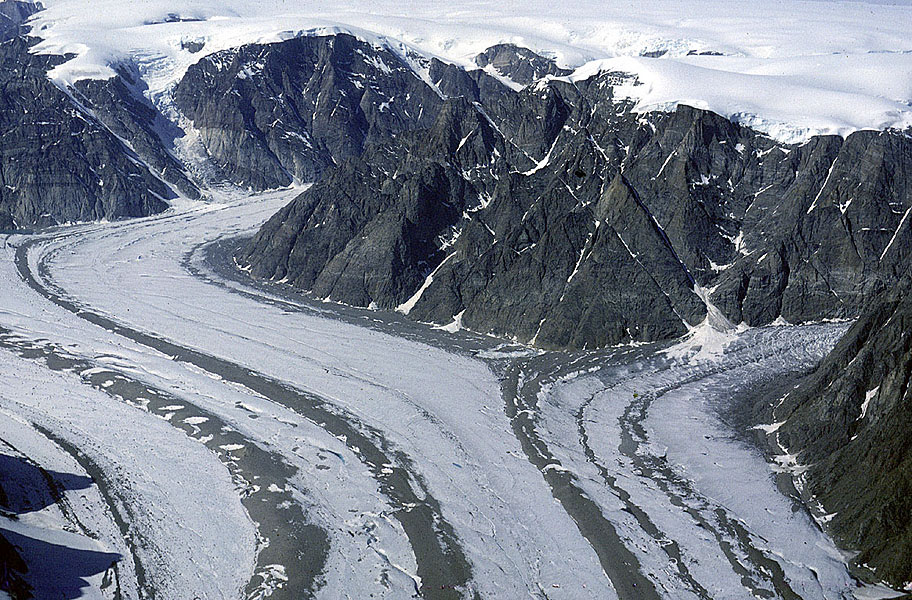 A fine set of medial moraines on Edward Bailey Gletscher, Milne Land, East Greenland. Note how convergence of two streams of ice with debris along the sides (as lateral moraines) combines to produce a medial moraines. The glacier is flowing towards the bottom of the picture. MH | 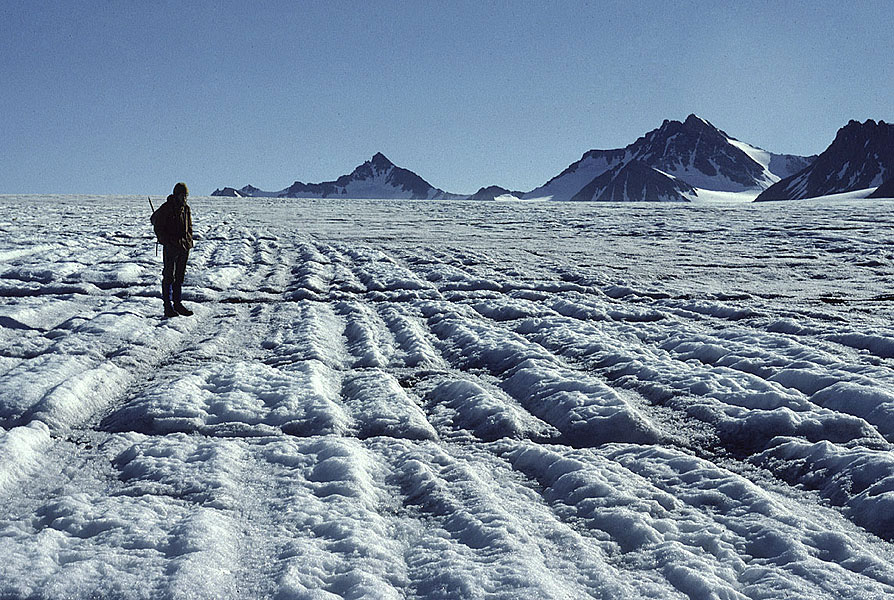 Most glaciers develop a prominent layered structure called foliation. This structure is subject to differential weathering, producing a characteristic furrowed surface. This fine example occurs on a glacier named Comfortlessbreen at Engelskbukta, western Spitsbergen. MH |  At depth within the glacier, ice deforms rather like a plastic material such as plasticene. Existing layers can become folded as at the surface of Griesgletscher in the Swiss Alps. MH | 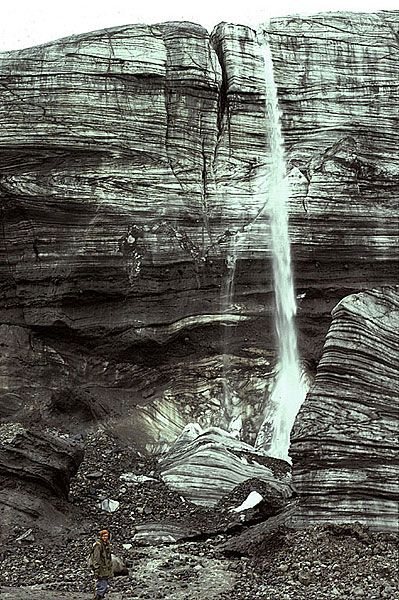 Folding of ice is well seen in ice cliffs, especially if debris from the base is entrained as well. This S-shaped fold is in the vertical cliff of Thompson Glacier on Axel Heiberg Island in the Canadian Arctic. MH |
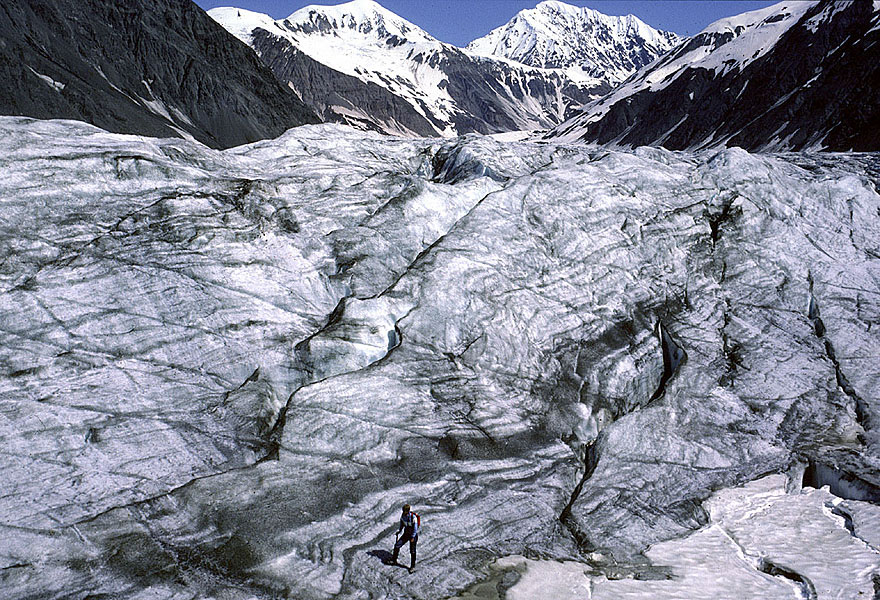 During a surge (a period of exceptionally fast flow) of Variegated Glacier in Alaska, the ice not only folded, but also faulted. The diagonal lines from bottom right to top left are low-angle faults called thrusts, where the ice up-glacier overrides the ice below. Folds and thrusts are well-exposed in this image, taken soon after the 1982/83 surge when the surface was still very rough because of the extensive crevassing that occurred at the time. MH | 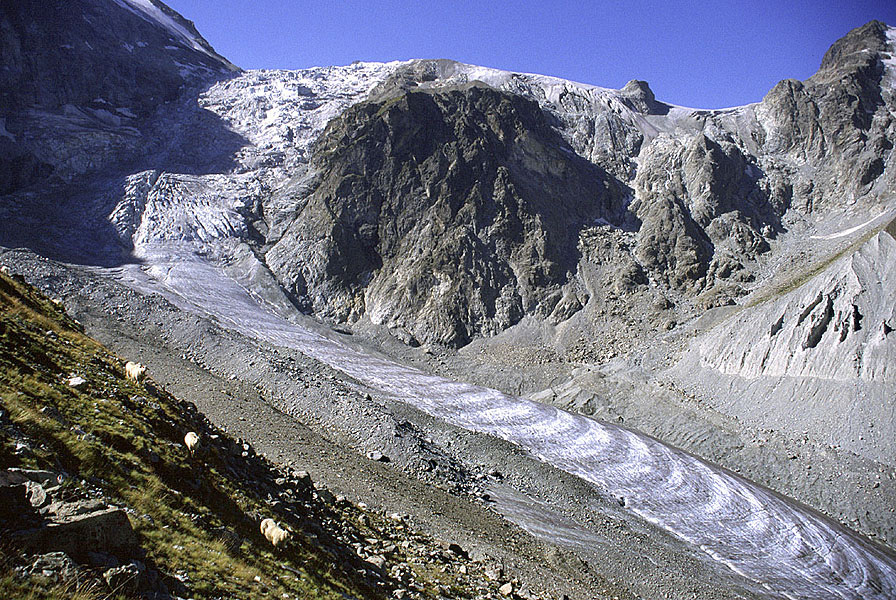 Glaciers that flow over icefalls commonly produce structures called ogives - surface waves at the base, followed by curving light and dark bands reflecting the way the ice flows. Many scientists believe that they are produced annually. These ogives are at Bas Glacier d’Arolla in Valais, Switzerland, but unusually are not being produced annually at the present time. MH | 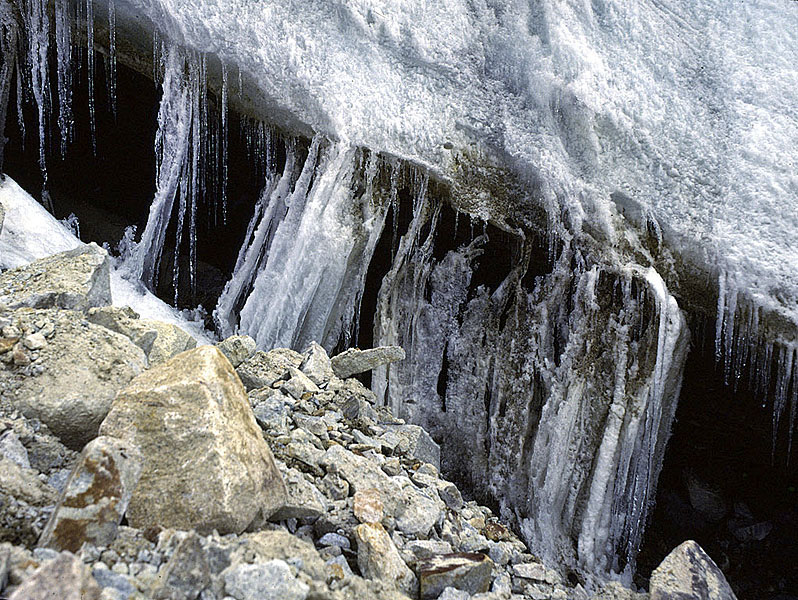 Sometimes the nature of glacier flow, especially sliding, can be observed directly. Icicles formed during the freezing cold night in the Peruvian Andes were bent (but did not break off) as the ice slowly moved over the bedrock. Some icicles have remained vertical as they have not yet reached the ground. JA | 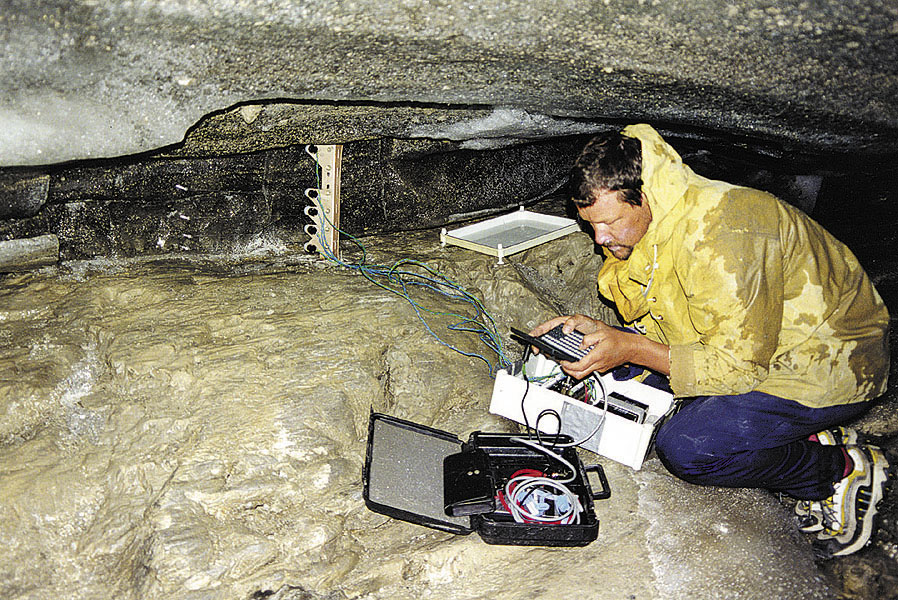 Glaciologist measuring deformation in the basal layers of the Glacier de Tsanfleuron, Switerland use a sophisticated electronic instrument. In the foreground is wet, striated rock (limestone) over which the ice slides, whilst deformation in the overriding ice and movement towards the left is indicated by the fold structure. Subglacial cave like this, near the receding ice margin, rapidly disappear, but new ones continually form where there are steps in the bed. MH |
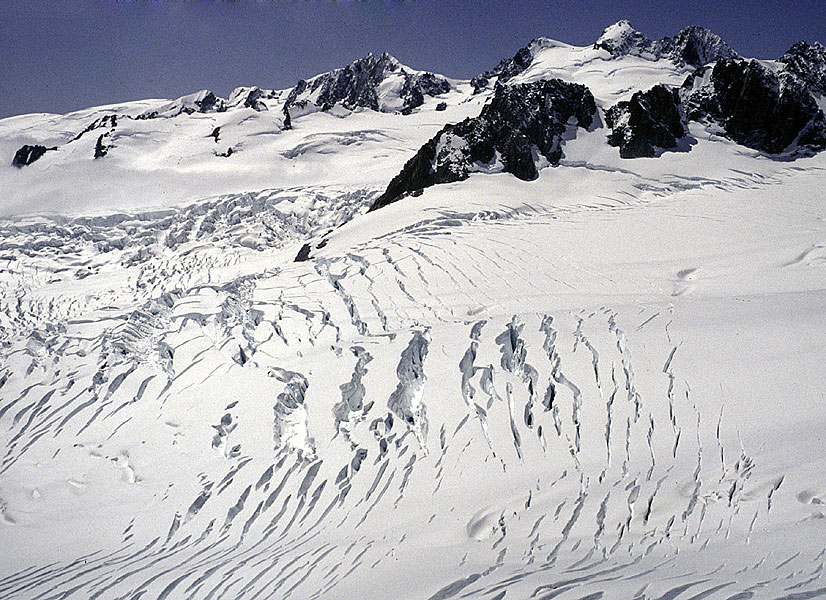 An aerial view of the heavily crevassed accumulation basin of Fox Glacier, South Island, New Zealand, is typical of glaciers with heavy snow precipitation as this induces fast flow. Apart from those crevasses that are visible, many others are bridged by snow, so walking across such terrain would be very hazardous. MH |  Crevasses are associated with ‘extending flow’, that is a zone of accelerating flow, as here in Glacier de Saleina, Valais, Switzerland. These transverse crevasses form as thin cracks that widen progressively. Then, as the ice approaches the lip of an icefall, the blocks between the crevasses begin to collapse. MH | 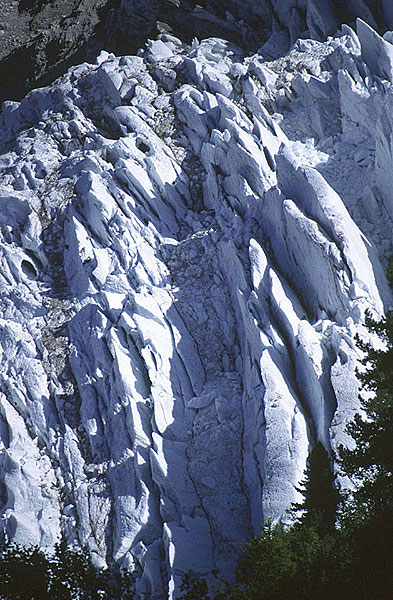 Glacier des Bossons in the French Alps, descending from Mont Blanc, is one of the steepest glaciers in the region. Fed by heavy snow, the glacier flows rapidly down the steep slope, becoming very heavily crevassed as it does so. Intersecting crevasses produce towers of ice called séracs that lean over and ultimately topple over. MH | 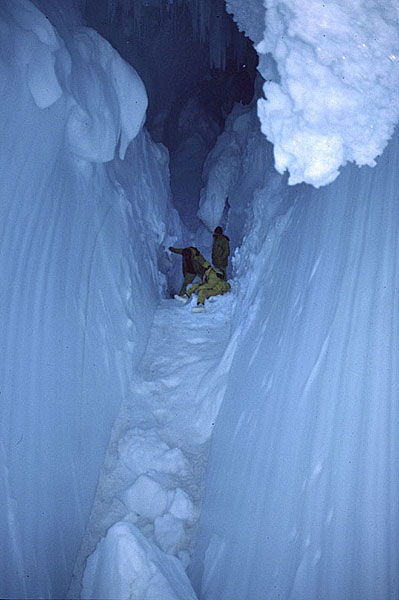 Exploring a crevasse deep in Erebus Glacier Tongue, McMurdo Sound, Antarctica. The cavity was approached from the surrounding sea ice and through a tunnel in the ice cliff. MH |
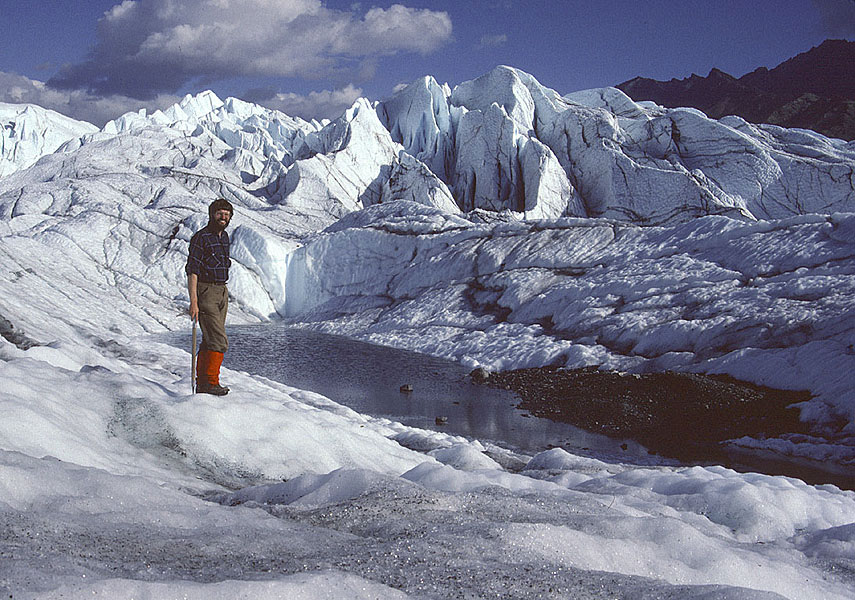 The ablation area of Matanuska Glacier, Alaska, shows how crevasses in this zone begin to melt back soon after they have formed, allowing visitors to walk into them if care is taken. MH | 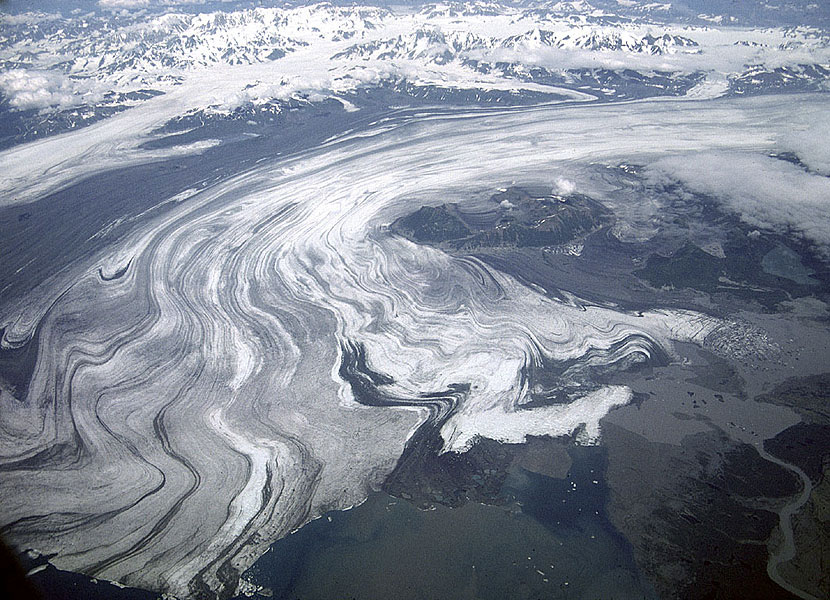 The huge Bering Glacier viewed from a scheduled flight from Seattle to Anchorage, reveals a fine set of medial moraines which preserve evidence for several surges in the past. During the most recent surge, the glacier advanced dramatically into Vitus Lake at the bottom of the picture. Bering Glacier (5,200 km sq.) is one of the largest glacier systems in North America. MH | 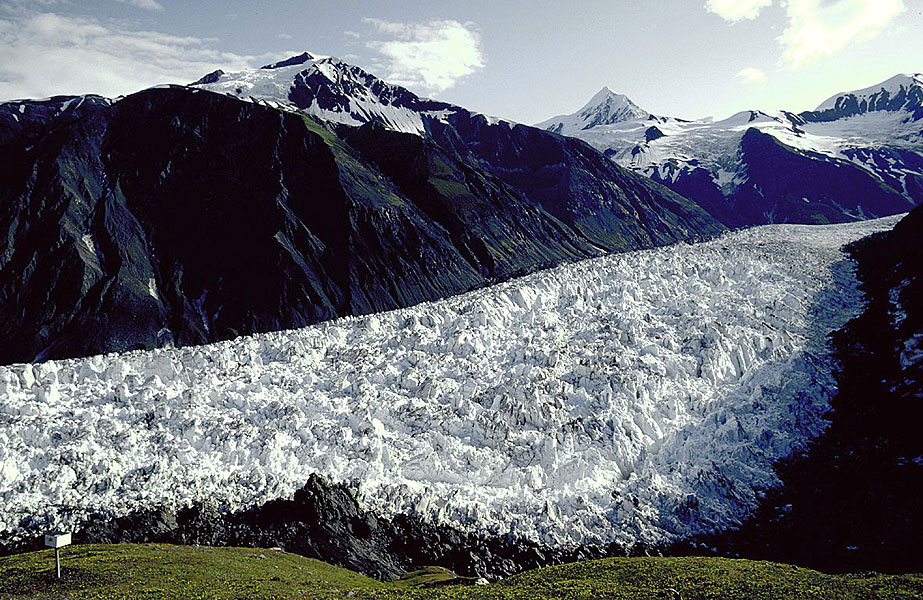 Glacier surges are relatively unusual phenomena, but result in dramatic changes when they occur. Here, during the 1982/83 surge of Variegated Glacier, Alaska, the surface became totally crevassed under the influence of velocities approaching a rate of 60 metres a day (2.5 metres per hour!). JA | 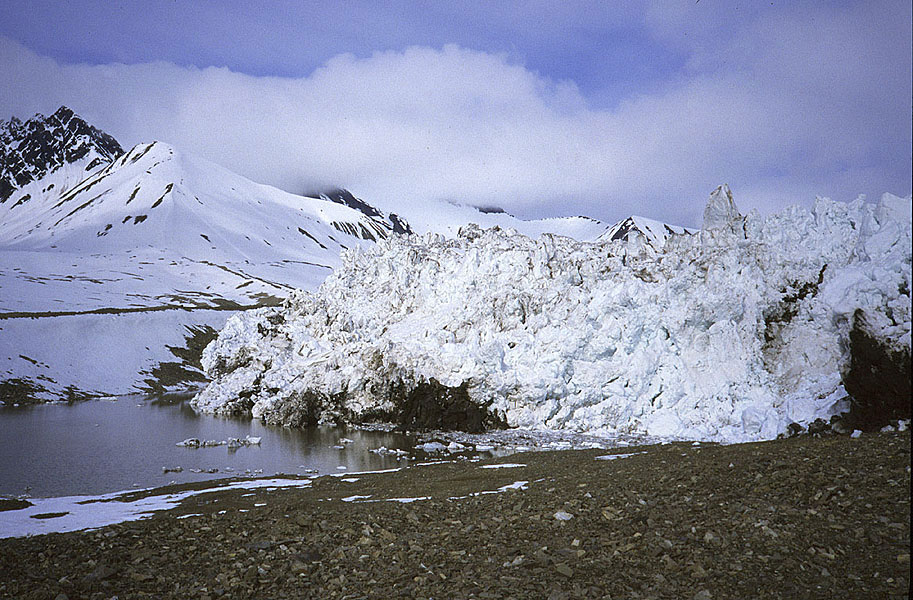 Polythermal glaciers in the High-Arctic are prone to surging, but on a time-frequency of more than 100 years. In this 1996 image, Fridtjofbreen in Bellsund, western Spitsbergen, is surging, hence the heavy crevassing. The surge triggered a rapid advance of the snout. MH |
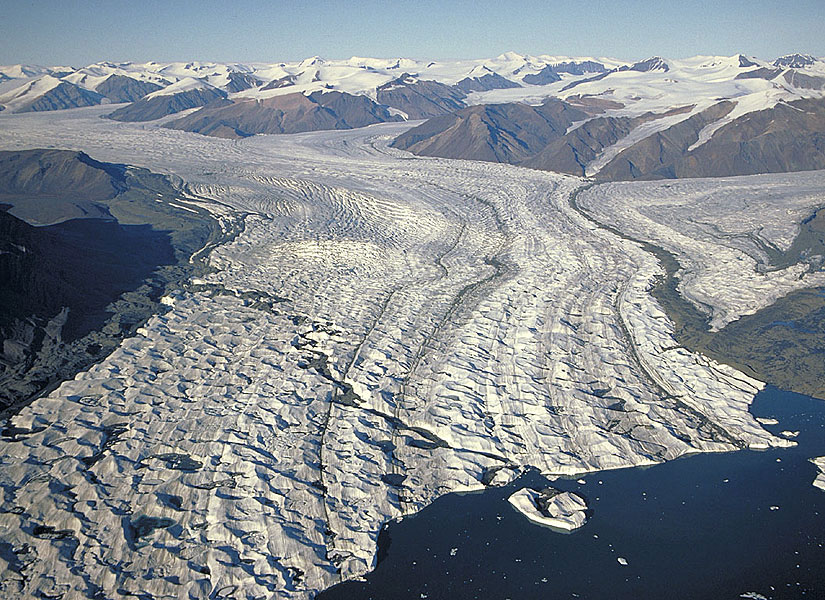 Iceberg Glacier on Axel Heiberg Island is a surge-type glacier, here in its quiescent state (1977), recognizable by the contorted moraines and pitted surface resulting from streams in stagnant ice. | 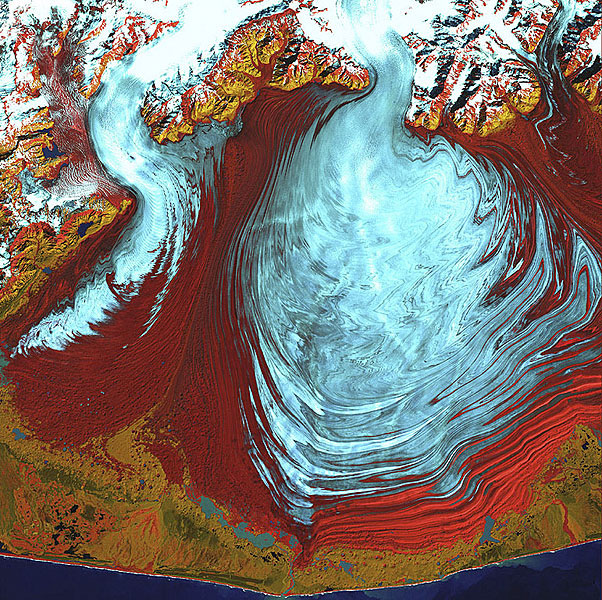 False-colour Landsat image of the huge piedmont lobe of Malaspina Glacier, Alaska. The glacier appears white and blue. Spectacular fold structures are the result of surging and compression in the direction of flow. Red represents vegetation, some of which is actually growing on ice (NASA, 31.8.2000). | | |
| Photos: Michael Hambrey (MH), Jürg Alean (JA) |